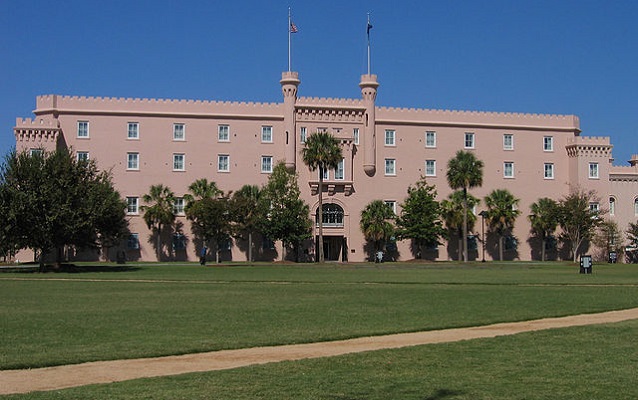Last updated: February 21, 2018
Place
South Carolina State Arsenal

Photo taken by AudeVivere, CC BY-SA 2.5, https://commons.wikimedia.org/w/index.php?curid=13075
The South Carolina State Arsenal, more commonly known as the Old Citadel, is associated with several aspects of Charleston's history. The impetus for the Arsenal's construction in the early 1830s was the 1822 uprising of enslaved Africans led by Denmark Vesey. In 1842 the South Carolina Military Academy, a liberal arts military college, was established by the state legislature. The new Academy took over the arsenal the following year, and the school soon became know as The Citadel in reference to the fortress-like appearance of the building. Many Citadel alumni fought in the Civil War. Cadets remained at the school but were periodically ordered by the governor to support the Confederacy, and helped drill recruits, manufacture ammunition, protect arms depots, and guard Union prisoners. Citadel cadets were responsible for firing the first shots of the Civil War, January 9, 1861, at the Union relief vessel approaching Fort Sumter. From 1865 to 1881, during Reconstruction in Charleston, Federal troops occupied the Citadel and the school was closed. Classes resumed at the Citadel in 1882, and continued here until the school was relocated to a campus on the banks of the Ashley River in 1922.
Two well-known Charleston architects, Frederick Wesner and Edward Brickell White, are credited with the Citadel's design. The original State Arsenal building was a simple-two story brick building surrounding an interior courtyard, designed by Wesner. White was responsible for changes to the building later in the century, and added the upper floors and wings. These two periods of construction are most visible from the courtyard, where the original first floor arches are offset by tiers of smaller arches in the upper floors. Charleston County used the building for government offices during much of the 20th century. In 1994 a local development firm renovated the building for use as a hotel.
